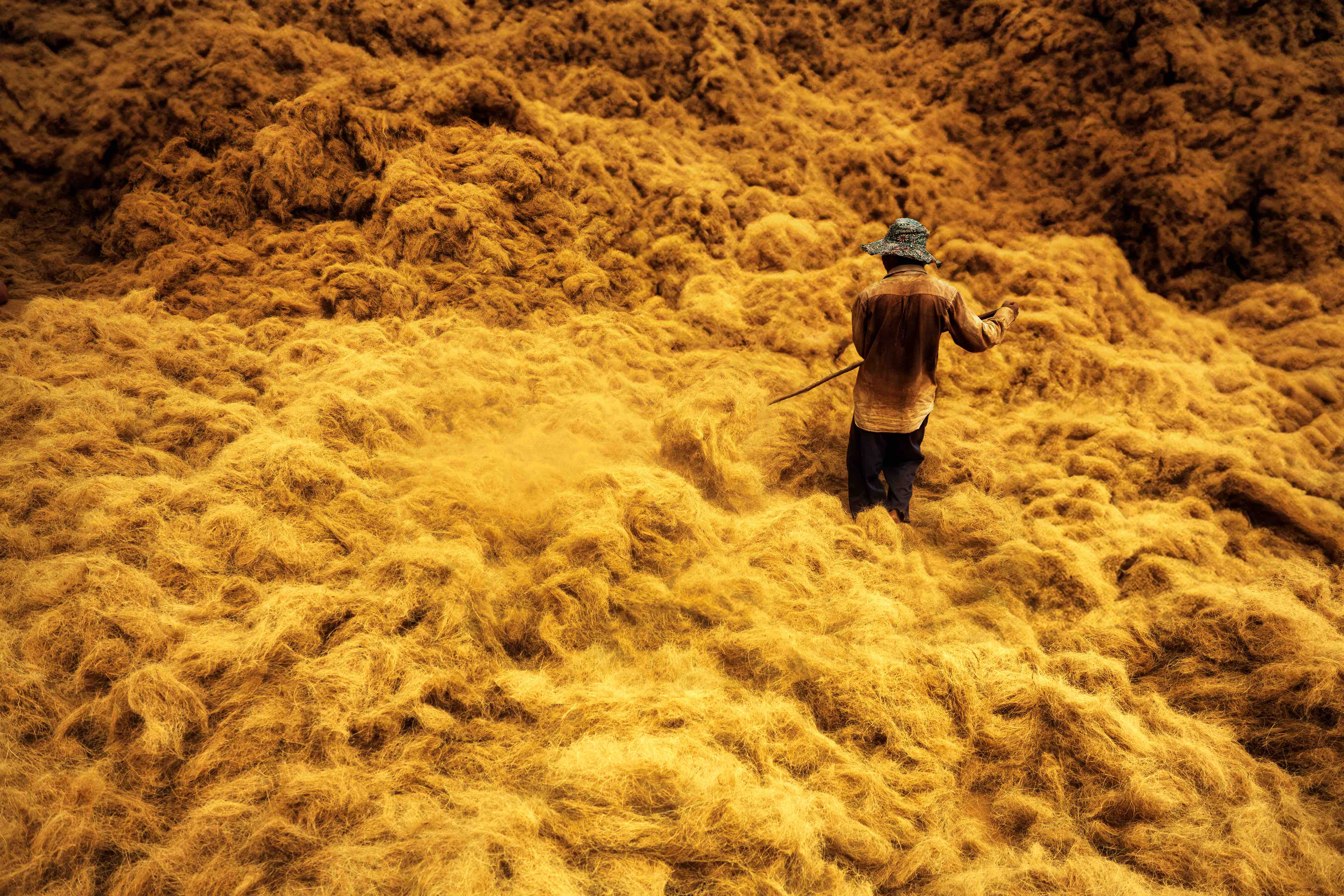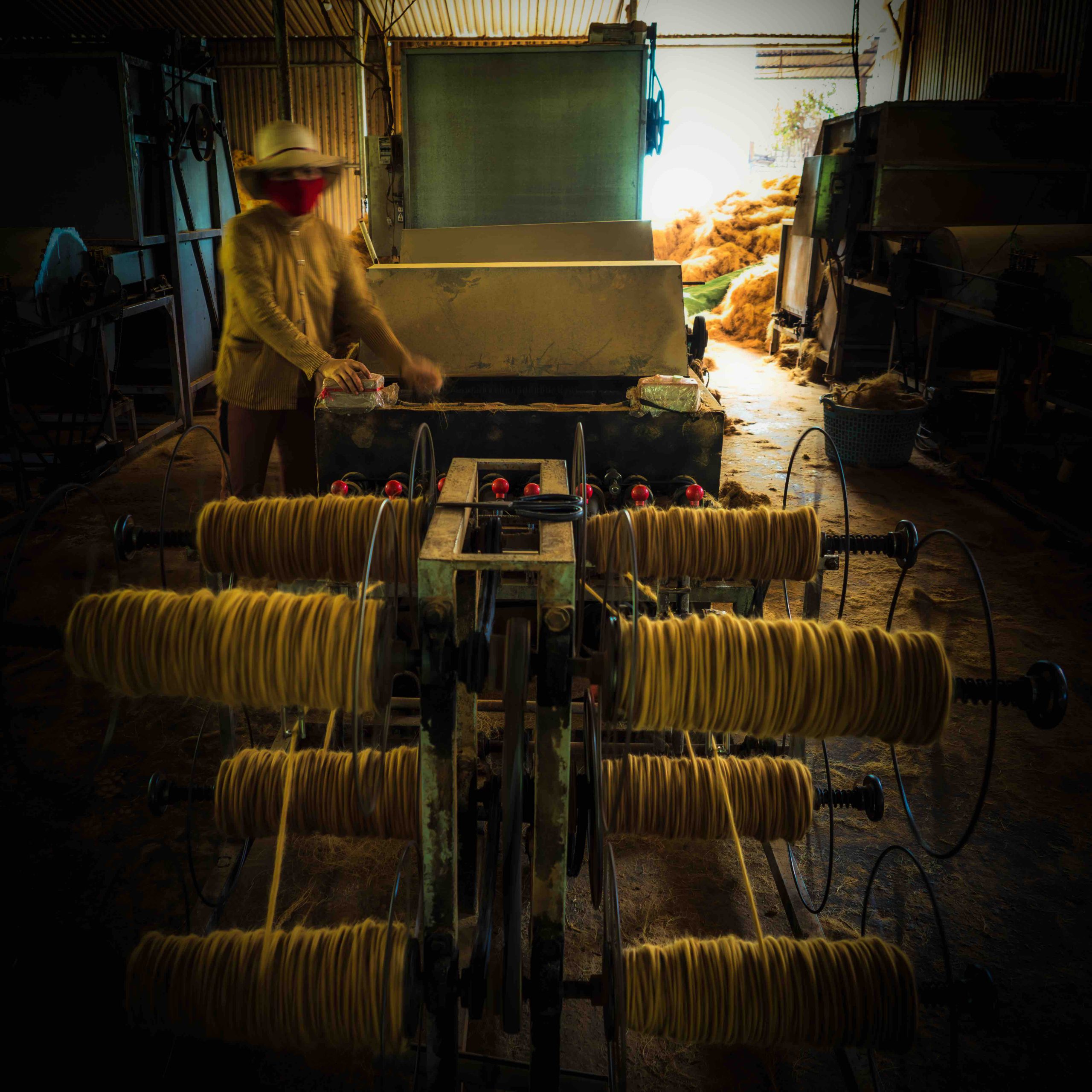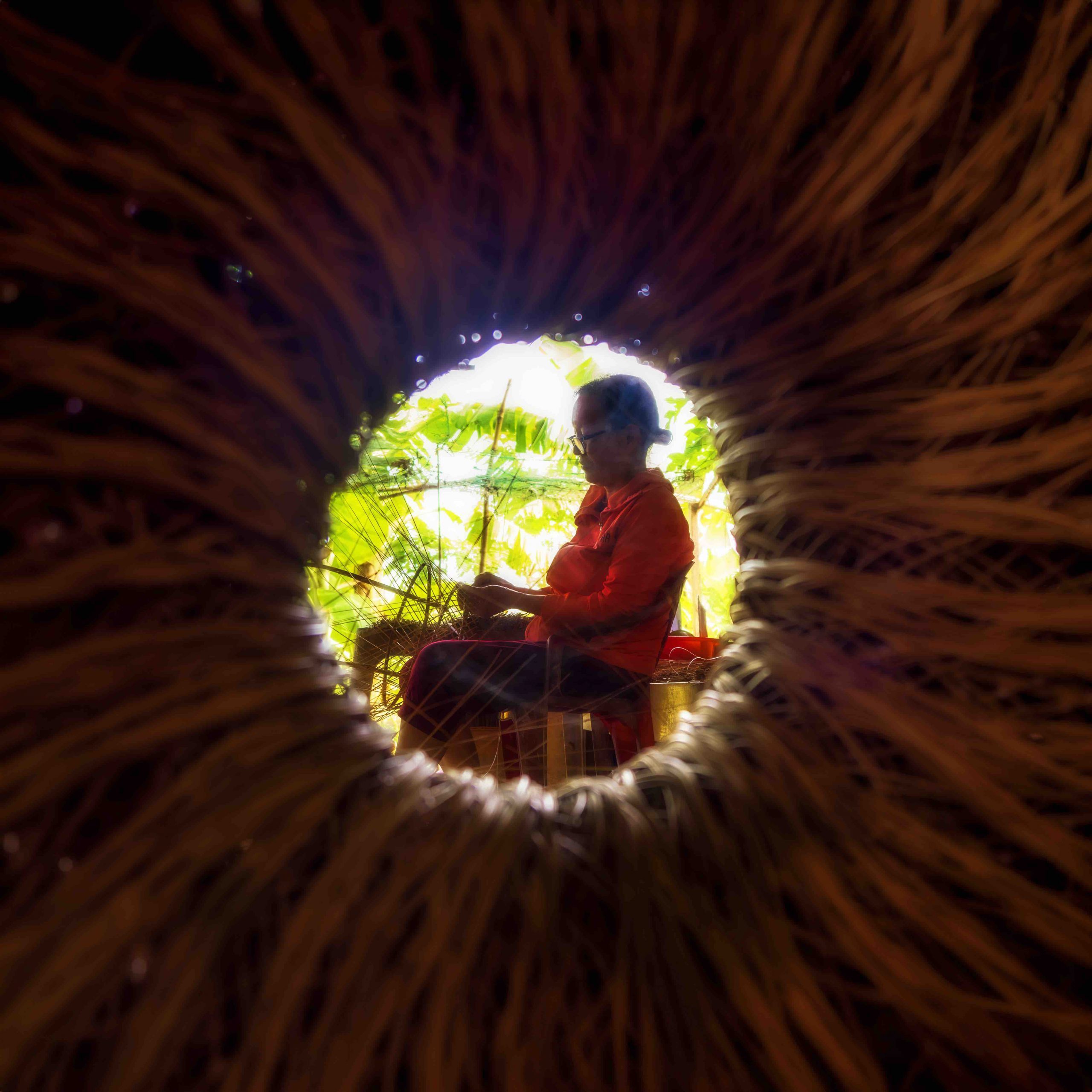Story: Phuong Nguyen
Photos: Le Quy Kien
Less than 100 kilometers from Ho Chi Minh City, Ben Tre is often compared to a shy girl resting between the two main branches of the Tien River. This region forms a distinct fan shape, separate from the sprawling fertile plains of the Mekong Delta. Its favorable geography, with a dense network of canals and rivers, makes Ben Tre perfect for coconut plantations, earning it the title “the Land of Coconuts.”

Seeking memories in the Mekong Delta
We set out for the Land of Coconuts early one spring morning when dew still lingered on the lush green rice fields. While many group members had visited the Mekong Delta repeatedly, we still felt a wave of nostalgia. Despite living and working in large urban areas, most of us carry an image of our homeland in our hearts. Most Vietnamese people hold dear memories of their home villages’ rice fields or bamboo hedges. Our outing to the Land of Coconuts felt like a homeward journey.
Ben Tre produces over 600 million coconuts each year. Coconut palms and their products are vital to the local economy and have significantly shaped the local culture.
A saying holds that: “The coconut tree is indeed generous. Its entire trunk, leaves, fruit, and even flowers are thoroughly used.” The coconut fruit contains a refreshing natural drink. The flesh of young or mature coconuts can be processed into various dishes or turned into coconut milk or oil. For years, coconut leaves have been used to build houses in the Mekong Delta. The trunk provides inexpensive and practical timber. The dry husks can be peeled, crushed, and twisted into fibers to weave sturdy mats, often used to cover bare hillsides to prevent erosion.

On this trip to Ben Tre, besides exploring eco-tourism models in homes set in orchards, we were also curious to see local artisans process coconut coir in Thom River village, located in An Thanh commune, Mo Cay Nam district. In addition to witnessing their hard work, we also experienced the essence of their rural lives. The area is busy with boats that create a small “floating market”, transporting goods directly on the river. This stretch of river operates day and night, with boats laden with coconuts and coconut products creating a unique scene.
An important cottage industry
The story of coconut coir and its products is particularly interesting. The Thom River was dug by our ancestors back in 1905 to open up trade routes. The coir industry gradually expanded thanks to this river’s prime position for transportation and commerce. The coir craft spread to the opposite bank in Khanh Thanh commune, Mo Cay Bac district. Today, visitors from afar can witness locals engaged in many activities such as selling coconuts, peeling coconut husks, grating coconut flesh, and spinning coir threads.
In this craft village, peeling coconut husks is a particularly challenging and risky task. The toughness of a dry coconut means only strong, agile men over the age of 30 are entrusted with this job. They forcefully throw the coconut onto a sharp blade embedded in a wooden post to partially split the husk, then use all their strength to tear it apart and extract the inner shell. Next comes the task of separating the coconut flesh. This involves splitting the shell open and carefully scraping out the flesh with a specially curved sharp knife. The freshly extracted flesh, the most valuable part of the coconut, is then sorted for various production needs.

After a delicious lunch featuring coconut-based dishes and a refreshing glass of coconut juice prepared by our eco-tourism host, we were guided to another craft village in Hung Phong commune, Giong Trom district. Here, the locals make use of another part of the coconut tree—the fronds—to weave baskets.
The artisans skillfully select coconut fronds and craft intricate, beautiful designs. Despite the hard labor involved, they create products so appealing that some are even exported to foreign markets. According to residents, basket weaving has been passed down through generations, preserving the vibrant memories and soul of this craft village.
We concluded our visit with a heartfelt farewell party hosted by our warm-hearted friends from Ben Tre, the sweet fragrance of coconut wine lingering on our palates. A sense of nostalgia filled the air. The Mekong Delta has always been a fertile land where people persevere through hardships and a place of outstanding natural beauty. The Land of Coconuts remains lush and green, its cottage industry thriving to generate income while preserving community culture and maintaining the area’s unique identity, all thanks to the contributions of its magnificent coconut palms.










